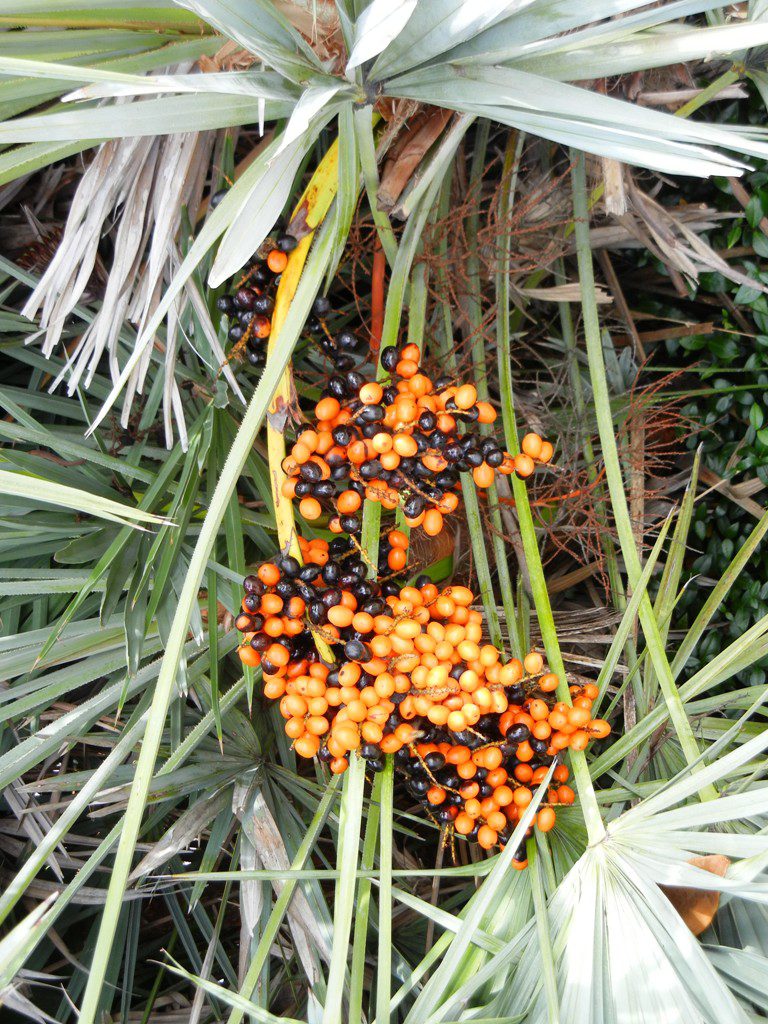
Saw Palmetto
Serenoa repens
Saw Palmetto is native along the coast of the Southeastern United States and all across Florida including some of the Florida Keys. It is tolerant of much salt air and occasional short term salt water flooding.
Once established, this is a very drought tolerant plant that can live from scrub habitat to seasonally flooded wetlands. Soil should have some organic matter or the plants will stay very small.
In rich woodlands the Saw Palmetto may reach 15 or more feet in height. Fire in natural settings will bring the height down. Killing the growing tip does not kill the plant as in most other palms.
This makes the Saw Palmetto a good choice for residential or commercial plantings where the height can be controlled by cutting once a year or two.
The saw tooth edges of the leaf stems will cut the skin, a feature that makes this plant a great security barrier. A mass planting that rolls over hills or fills in between Slash Pines is gorgeous. The fruit turn from green to gold and finally black.
Deer, bears, raccoons and other wildlife including alligators and humans eat the sweet black fruit. This glistens with sugar and healthy oils when ripe and has the flavor of sweet balsamic vinegar.
I enjoy eating a dozen or more when hiking and have never had a bad reaction to them. They are not good in salad though, the taste just doesn’t go with vinegar dressing.
When you cut the plants back in your landscape, pull out the central bud of the cut pieces and use the soft interior as you would hearts of palm. If you keep bees, Saw Palmetto honey is one of the most flavorful.
There is a range in leaf color from solid green, light blue, deep blue to almost silver. Silver Saw Palmetto is rare, blue is more common. Each plant has its own color and if you see a large patch of one color in nature, it is from a plant that has spread out over many years.
This is a plant that can be found in full sun to the moderate shade of an oak tree. Try mixing with Beautyberry, Coralbean, Hercules Club, Wild Coffee, Myrsine, Dahoon Holly, Redbay, Necklace Pod, Scrub Palmetto, Beach Cocoplum, Blackbead and other shrubs and trees that will grow tall and not be drowned out by the Saw Palmetto.
It can be planted near a building when cut back regularly to keep it in bounds. When planted in masses away from buildings, roads and walkways, mowing around it is easy and pruning won’t be required very often, if at all.
How about a simple group of Slash Pine, Saw Palmetto and any of the above mentioned? Just place so that you can easily mow around them and leave some open portions to play in or for a bench to view wildlife from .